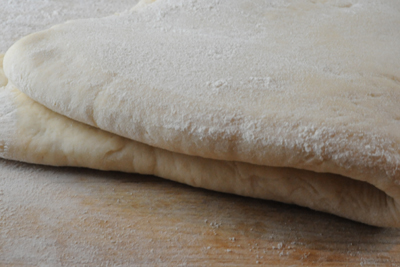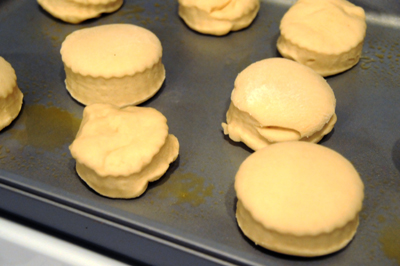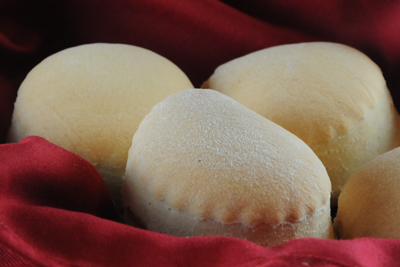This week we are in Chile, a long, narrow strip of land between the Andes Mountains and the Pacific Ocean. Chile is to South America what California is to the US—a place that everyone who doesn't live there thinks is just a mile-wide strip of beach.
 |
| Hey, what's that pale green bit down there? Turns out Chile claims some 480,000 square miles of ice and penguins down in Antarctica. |
Of course, for Chile that's actually closer to the truth than it is for California. Chile is 2,700 miles long with an average width of 109 miles (compared to 250 for California). It is the longest country in the world, and it has the fifth-longest coastline—48,000 miles if you count all those inlets, fjords and peninsulas.
Chile is also a land of prosperity and stability. It leads Latin America in human development, income per capita and economic freedom, and corruption is nearly absent from its government.
Like many South American nations, Chile's cuisine is descended from Spain and enhanced by local ingredients and influences from various other nationalities (there's a little Germany, Italy and France thrown in, with some Middle Eastern on the side). The long coastline, of course, means that seafood plays a big part in traditional cuisine. In fact, this is where the (duh) Chilean Sea Bass comes from, you know that very expensive piece of fish that, if you eat it, will make you susceptible to being struck by lightning or possibly just by the wrath of people who promote sustainable eating (The Chilean Sea Bass is not actually endangered, but it's illegally overfished, which qualifies it as an unsustainable species. Or so I've read.).

Most of the rest of Chile's food, as far as I can tell, is dessert. If internet resources are anything to go by, anyway. Actually that's not completely fair—I did find a lot of recipes on "Chilean Recipes," home of Chilean blogger Sonia Paz Baronvine-Silva. But most of the main courses were either watery-looking beef soups (which don't really appeal to me, though that's just my personal tastes) or really heavy or stodgy looking dishes like a fries and beef dish, fried fish and something that looked a lot like a tamale pie. Again, personal tastes. So I went with this recipe (also from Sonia's blog):
Paila Marina
- 1/4 cup olive oil
- 1/2 large onion, chopped
- 3 cloves garlic, roughly chopped
- 1/2 teaspoon salt
- Freshly ground pepper to taste
- 1 1/2 pounds cod or other firm white fish, cut into chunks
- 1/2 cup white wine
- 1 pound mussels in the shell
- 1/2 pound crab meat
- 1/2 pound large shrimp, peeled and deviened
- 1/2 pound clams in the shell
- 1/4 pound scallops
- 1/4 pound sliced octopus (I used calamari steaks)
- 1 cup chopped cilantro
Hallullas
- 2 1/4 tsp yeast (1 packet)
- 1/4 cup warm water
- 3 cups all purpose flour
- 1 tsp sugar
- 1 tsp salt
- 1/2 cup warm milk
- 1/4 - 1/2 cup warm water
- 1/4 cup lard, softened
Empolvados
- 4 large eggs, separated
- 3/4 sifted powder sugar, divided
- 1 cup sifted all purpose flour
- 1 tsp baking powder
- 1 can dulce de leche
- Powder sugar for dusting
Now at the risk of sounding broken recordish, I'll say what I always say: put all the ingredients in your bread machine, set it on the dough cycle, and then skip ahead to the part where you have to roll out the dough.
If you don't have a bread machine, start by proofing the yeast in the warm water. Meanwhile, place the four in a bowl and add the salt and sugar.
When the yeast is frothy, pour it into the flour mixture, then add the milk. Mix until blended, adding a tablespoon of water at a time until the dough has the correct consistency. Knead until elastic (about 10 minutes). Add the lard and knead until smooth.
Oil a glass bowl and put the dough inside. Cover with plastic wrap and let rise until doubled in size.
Roll the dough out until it is about 1/2 to 3/4 inches thick. Dust with flour and fold in half. Repeat twice, letting the dough rest for a few minutes between foldings. After folding it the third time, let it rest for another 5 minutes.

Use a biscuit cutter to cut the dough, then place them on a greased cookie sheet. Use a fork to make cross-hatches in the top (I didn't bother. Actually, I forgot.) and let rise for another 30 minutes, or until doubled in size.
 |
| Yes, some of them are looking pretty wonky. |
Meanwhile, preheat the oven to 400 degrees. When the rolls have risen, place them in the oven for 20 to 25 minutes, or until golden. Remove and let cool.
Now for the main course:
First cook the onion in the oil over medium-high heat. When soft, add the garlic and stir until the onions are translucent (no more than 2 minutes). Add the salt and pepper to taste.
Add the cod and the wine and bring to a boil. Reduce heat, cover and let simmer for 5
minutes.

Add the rest of the seafood and cook until the shells open and the shrimp is pink (this should take about 5-8 minutes).

If any of the shellfish don't open, throw them away. They're no good.
Sprinkle cilantro over the stew and serve.

And at last, the dessert:
Preheat your oven to 400 degrees. Line a cookie sheet with parchment or waxed paper.
Beat the egg yolks with half of the powdered sugar until they thicken and turn a pale yellow color.

In a mixer, beat the egg whites until they form soft peaks. Add the rest of the sugar.
Now sift the flour together with the baking powder. Fold 1/3 of the flour into the egg yolks, then add half the egg whites. Fold in the next 1/3 of the flour, then add the rest of the whites. Now add the last of the flour.
Drop approximately 2 tablespoons of batter at a time onto the cookie sheet. Leave about two inches between each one (they spread a lot). Sprinkle powdered sugar over.

Bake for 7 minutes. The cakes should be turning slightly brown on the bottom.
Cool the cakes on a wire rack, then spread dulce de leche on the flat side of one and top it with another. Finally, dust the finished empolvados with powdered sugar.

So as you know, I don't give my kids fish so Martin and I ate this meal alone. Let me just start by saying that the hallullas were really good. But then again, I never met a fresh baked bread I didn't like, unless you count the loaf I made two days ago that I forgot to put salt in. As for the Paila Marina, I liked it. Martin usually yawns when I give him fish, though, and this stew didn't really elicit any unusual responses from him. Except that he refused to have anything to do with the clams and mussels, which after eight years of marriage surprised me a little since I had no idea he was that opposed to shellfish. Of course, in his defense I don't really cook it that often.
We liked the empolvados, though, but I have to admit that I think I'm a little on the fence about dulce de leche. I love caramel but dulce de leche is, well, a little *too* caramel. Which frankly I didn't even know was possible. Still, that didn't stop me from eating them … though I just had the leftovers without the dulce de leche. That is, the ones that were still sitting on the plate after my kids discovered them there the next day.
Next week: Canton, China
For printable versions of this week's recipes:












I'm a missionary in Chile, and love to cook.
ReplyDeleteSeafood is very common here, and I've seen paila marina a lot. Hallullas were a great choice for one of the three staple Chilean breads. The others are marraquetas (think french loaf, but stout and segmented) and pan amasado (much like the hallulla, but smaller and generally home made, as opposed to bought from a bakery). Chileans LOVE their bread. Day-old bread is thrown out to the dogs, or reduced in price drastically, because nobody wants it.
I suppose if you wanted to give Chile another go for those of us who don't eat seafood, you could try empanadas de pino (to avoid making pastel de choclo, or "tamale pie," as you called it :-D), with some ensalada chilena, and mote con huesillo as a dessert. I have recipes for all of those, if you like.
I don't know if links are allowed, but here's a short (8-minute) video I made about Chile during their September celebrations. There's a brief food section, if you're interested.
http://www.youtube.com/watch?v=2-41ZvGdgsc&list=UUyiM0kFJ4SfA-IDPaH2861A&index=1&feature=plcp
Hi again Madailéin! Thanks for the comments. I would love to have those recipes! I always like to be contacted by people who are living and working in the countries I blog about, since that's the best way to obtain authentic recipes. If you would like to share I would definitely do Chile again. Thanks!!
ReplyDeleteHey there- Just wanted to let you know that our family has been following along and cooking with you. We sure do love it! It gives us land-locked Iowan's some great food! Our kids (12, 14, 16 boys) have really gotten into it and have liked most of the meals. The 14 year old really doesn't like fish, but otherwise it's pretty good. Thanks very much! By the way, we decide to make pastel de choclo and pebre. It's just about ready. We'll see how it tastes!
ReplyDeleteHi Darrin, that is so great to hear! And please feel free to post your take on these recipes on the blog--I would really love to hear how you're doing and how what your family thinks of the food!
ReplyDelete